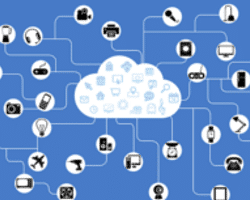Technology is advancing at a fast pace, and operating with the old technology can hold back a company while innovation outsmarts each passing day. With the accelerating rate of technological change comes the accelerated rate of obsolescence. Data logger technology is one such kind of traditional technology widely used in supply chains which is being affected by new trends. Data loggers, the electronic devices used to log location-based and environmental data, were once considered as exciting and innovative but with the time, much of the old data logging technology has become obsolete and even a restraint to modern businesses.
Ever wondered how IoT enabled devices are more efficient than the traditional data logger technology? Here is a quick overview!
1) Data Availability Post Shipment vs Real-Time Data Stream
Traditional data loggers accompanying cargo are post transit data analysis tools and provide shipment details only after the shipment has arrived at the destination. Important conditions such as temperature, humidity and insider shocks during the transit are not revealed and addressed. One cannot be proactive in these situations. The data logger technology is thus going out of fashion and these devices are getting replaced by technologically advanced devices that are capable of providing real-time, actionable information. An IoT enabled device residing with your shipment gives you real-time data updates so that you can react to disruptions when required before they would negatively affect business operations or customer satisfaction.
2) Limited Data Accessibility vs Instantaneous Data Exchange + Analytics
Data loggers are not equipped with communication technologies, they are incapable of sending real-time data. Data on shipment conditions is stored only in the one single device that is riding along with the shipment. This does not communicate until data is extracted from its memory. With IoT enabled real-time sensing and analytics technologies all the interested parties can access the data at the same time mostly via easy to use, cloud-based user dashboards. The dashboards are updated automatically and in real-time so the manual effort of extracting information and sending it across in multiple emails to stakeholders can be eliminated.
3) Manual Setup vs Automatic Data Transfer
To extract and analyze data form the traditional data logger technology, , a specific software and data wiring is necessary to be installed at the receiver’s side. This can often cause problems with the quality condition monitoring of perishable products like milk, chemicals, fruits, flowers and vegetables. If a proper software with wiring is not available at the receiver’s end, these products can become stale while waiting for verifications. IoT enabled technology transfers data instantaneously. This enables hassle-free monitoring of required conditions. The shipments can be handed over to the buyer without any delays, as soon as it has reached the destination. Furthermore, when the data transfer happens automatically on the cloud, no additional infrastructure is required for data transfer or data analysis.
4) Non Intelligent vs Intelligent Analytics
Can data loggers help you to make predictive analysis about shipment risk management and financial management? Not Really! Data loggers are ‘nonintelligent’ devices only collecting and storing data until it is retrieved by a user. On the other hand, with the software connecting to real-time IoT technology, intelligent reports on performance management or various quality metrics are easier to generate with just a few clicks. The collected data can then be used for making predictions on efficient management of future shipments. Data intelligence is the key component that analyses and accumulates information on shipments, exposes risks and empowers businesses to make better decisions.
Is your organisation still relying solely on loggers to track your valuable products while in-transit? Arviem’s service can help you provide end to end supply chain visibility and help you to reveal inefficiencies in your supply chain.
Discover the differences between Data Loggers and IoT enabled Supply Chain Visibility by Downloading our White Paper.




